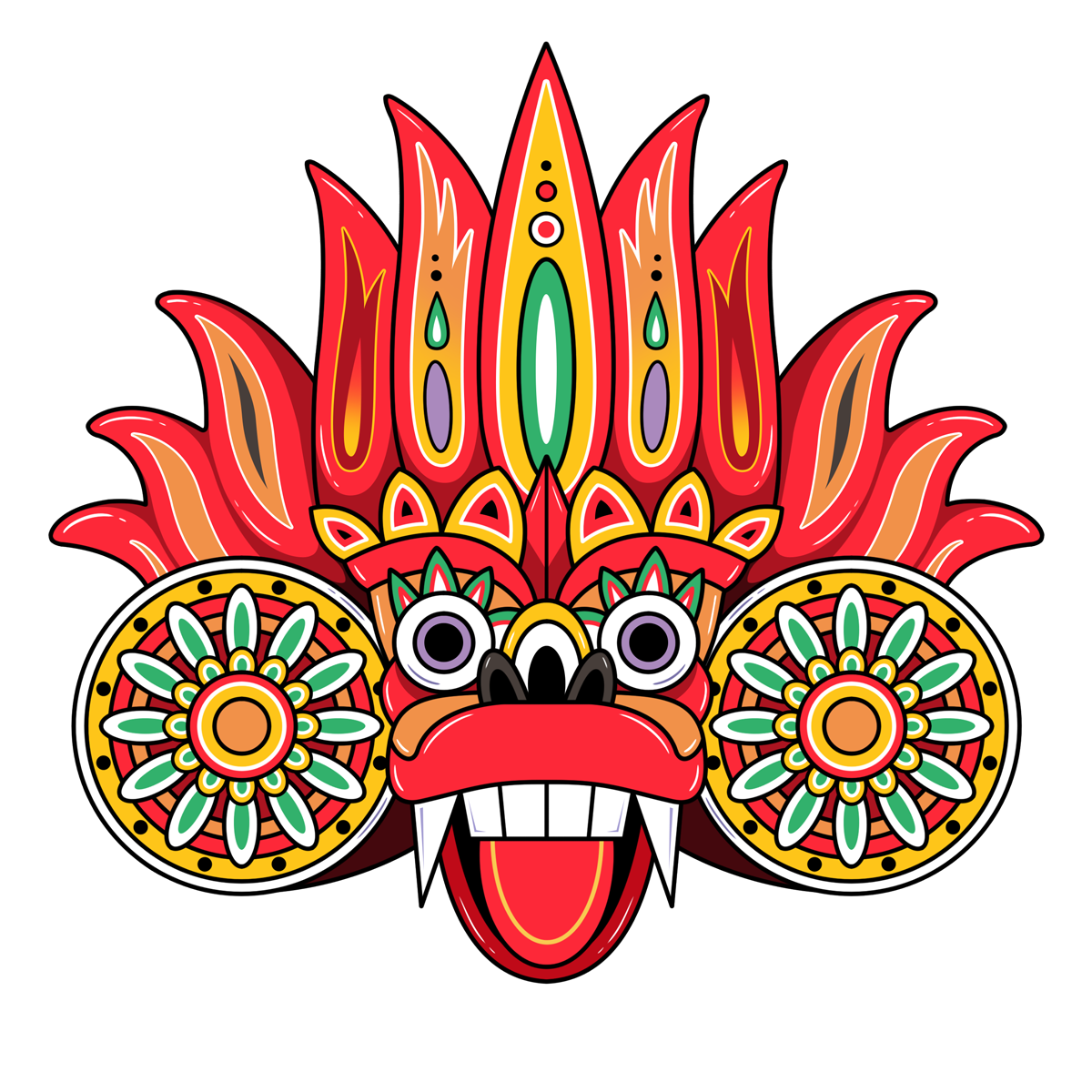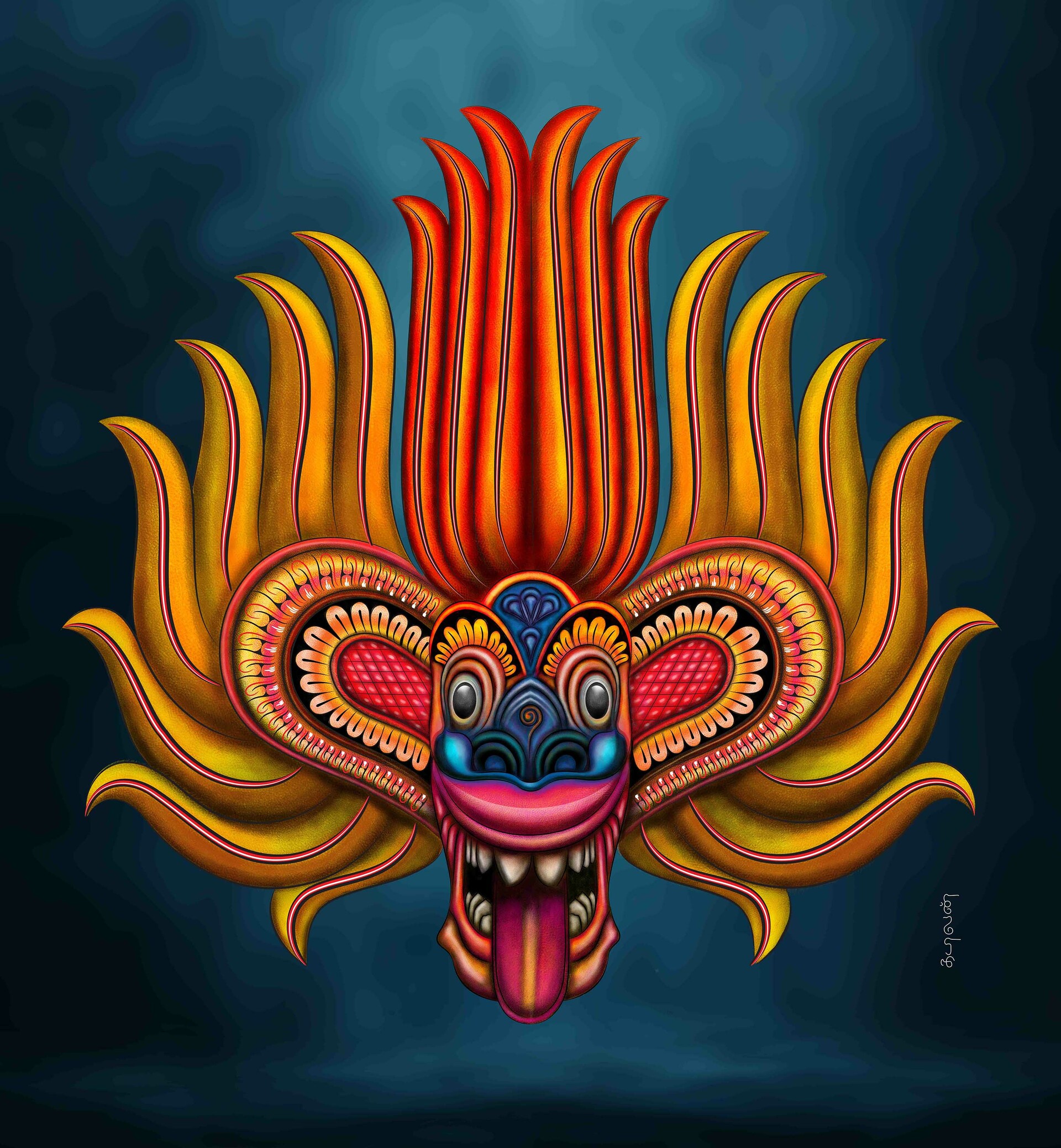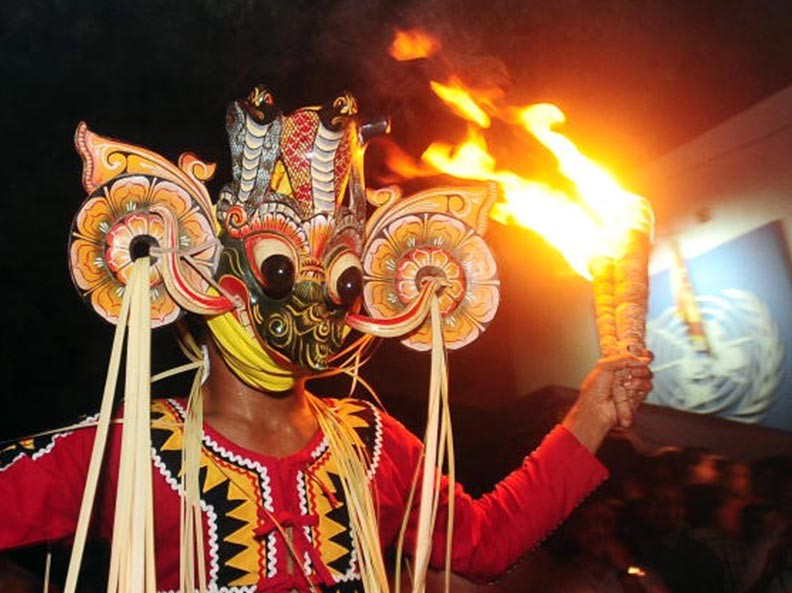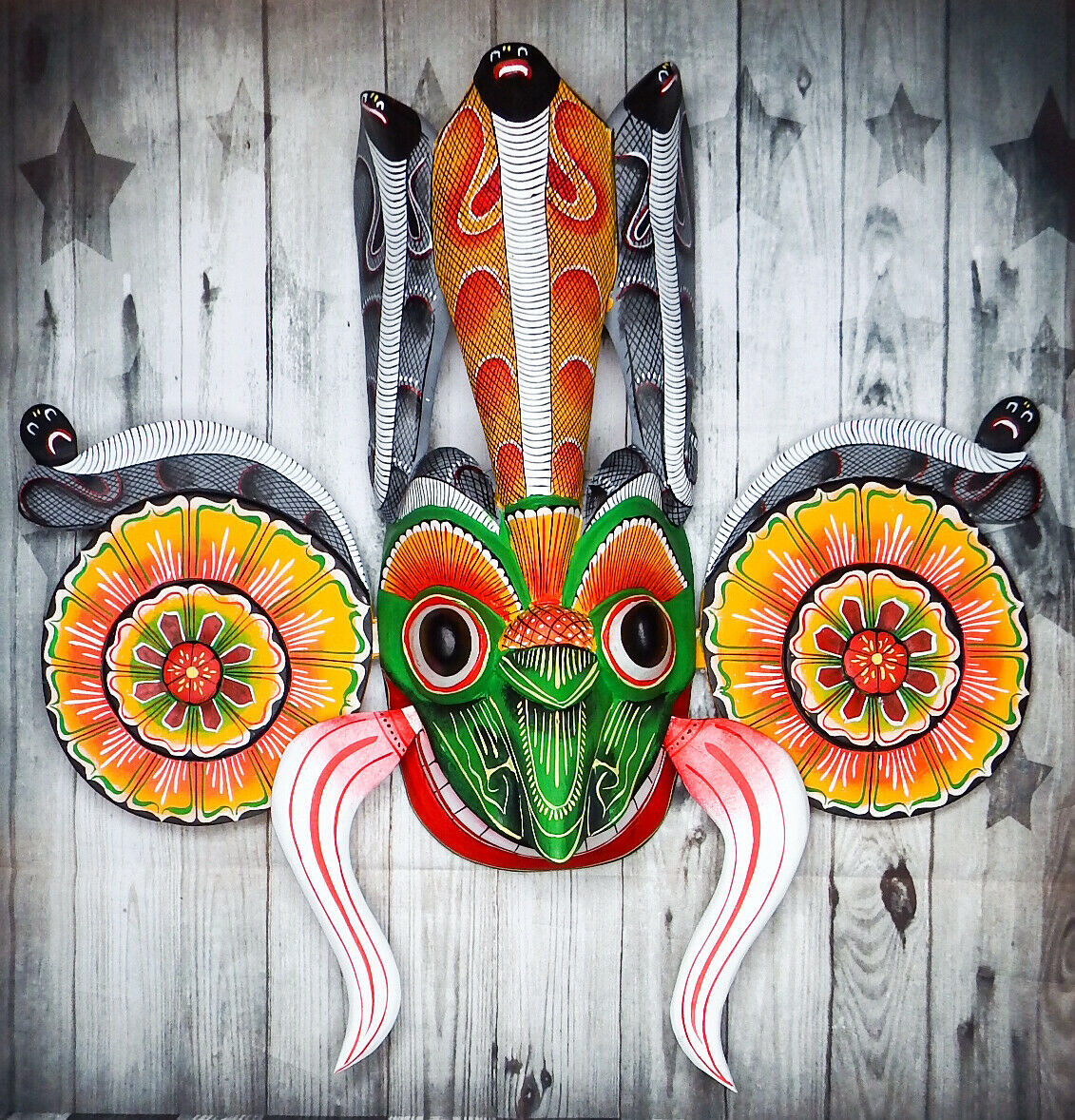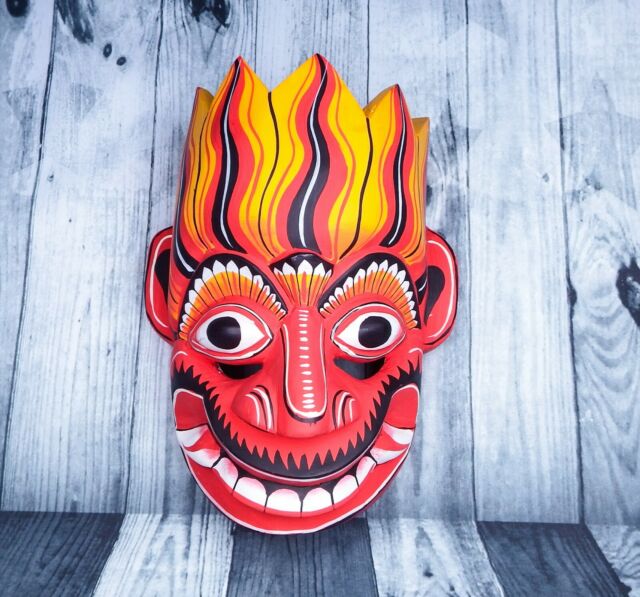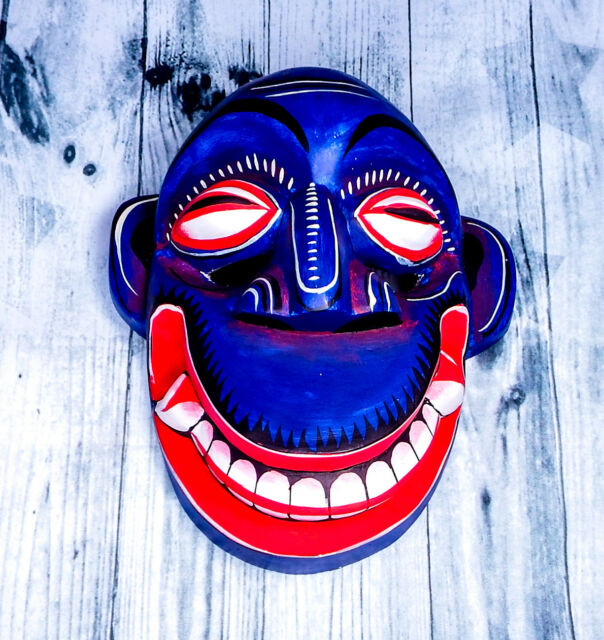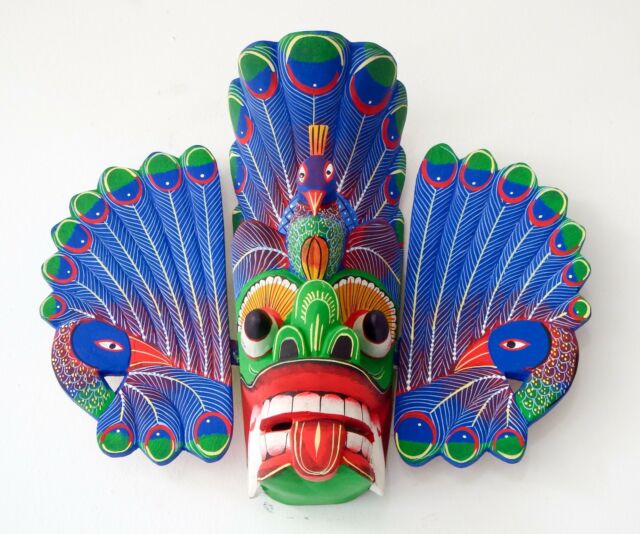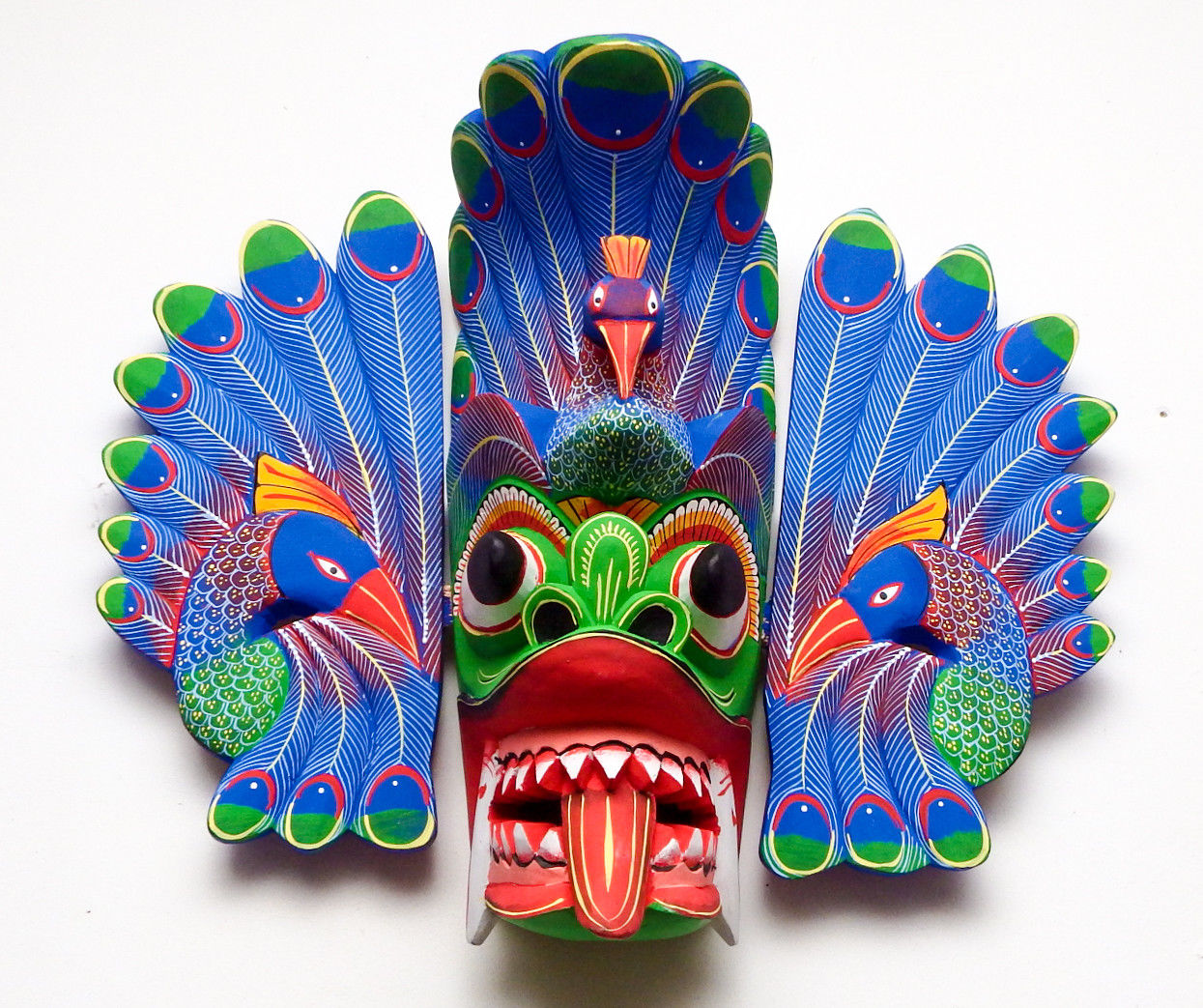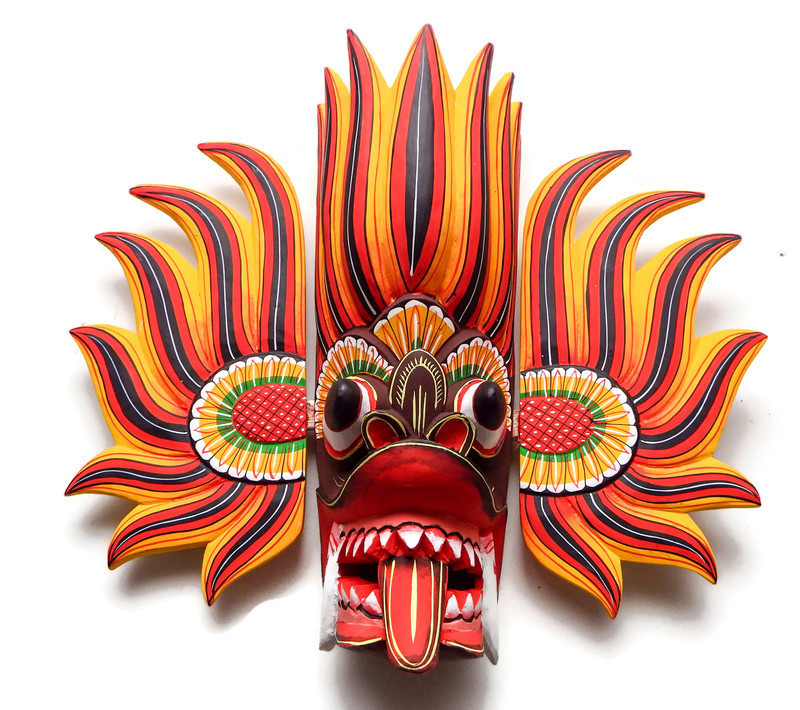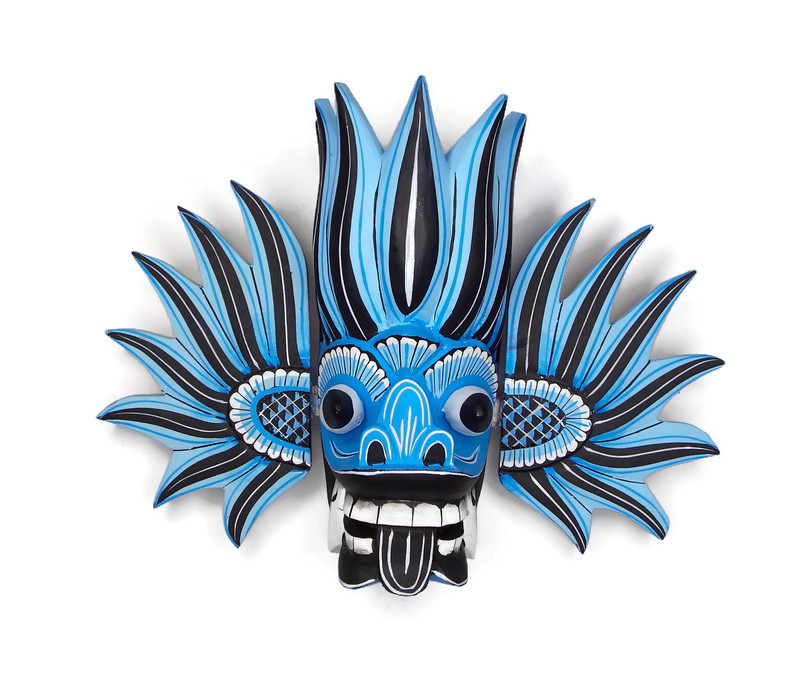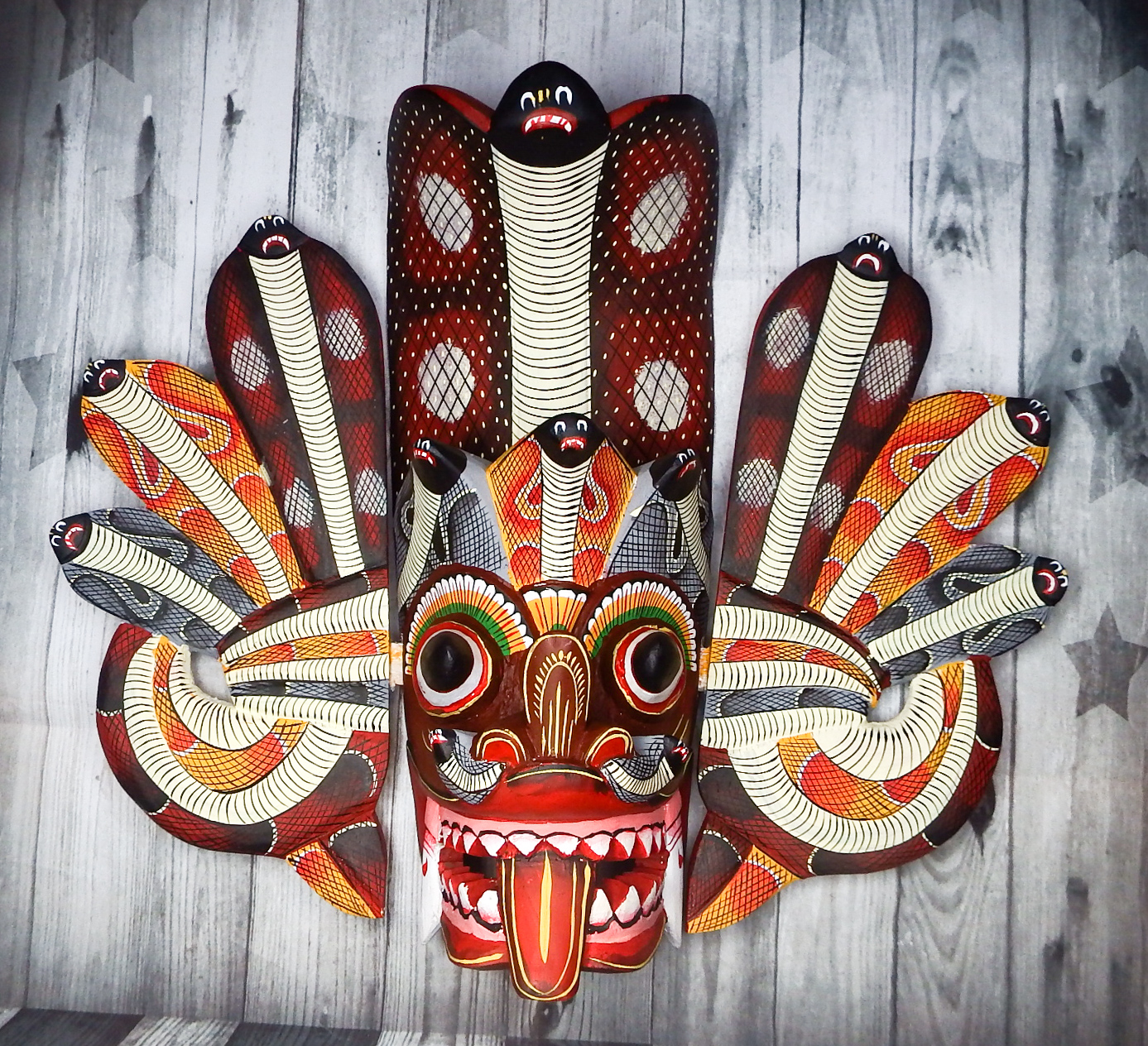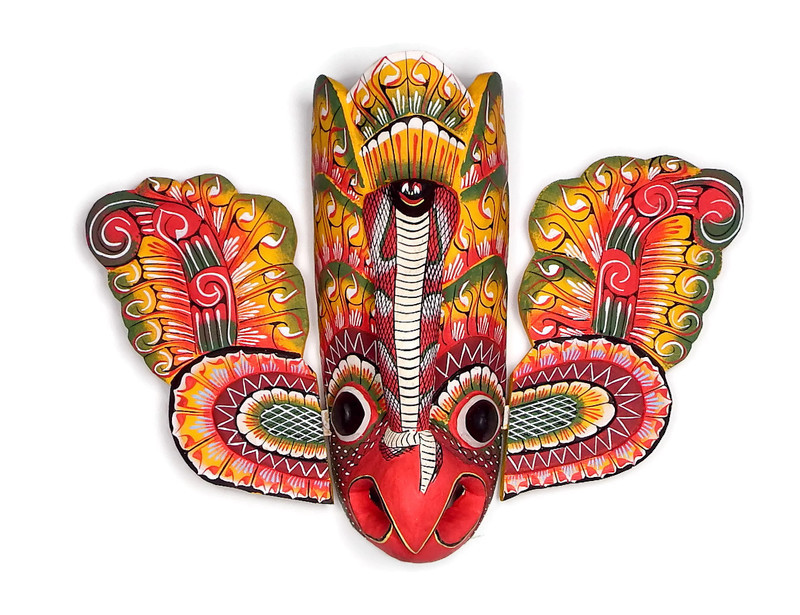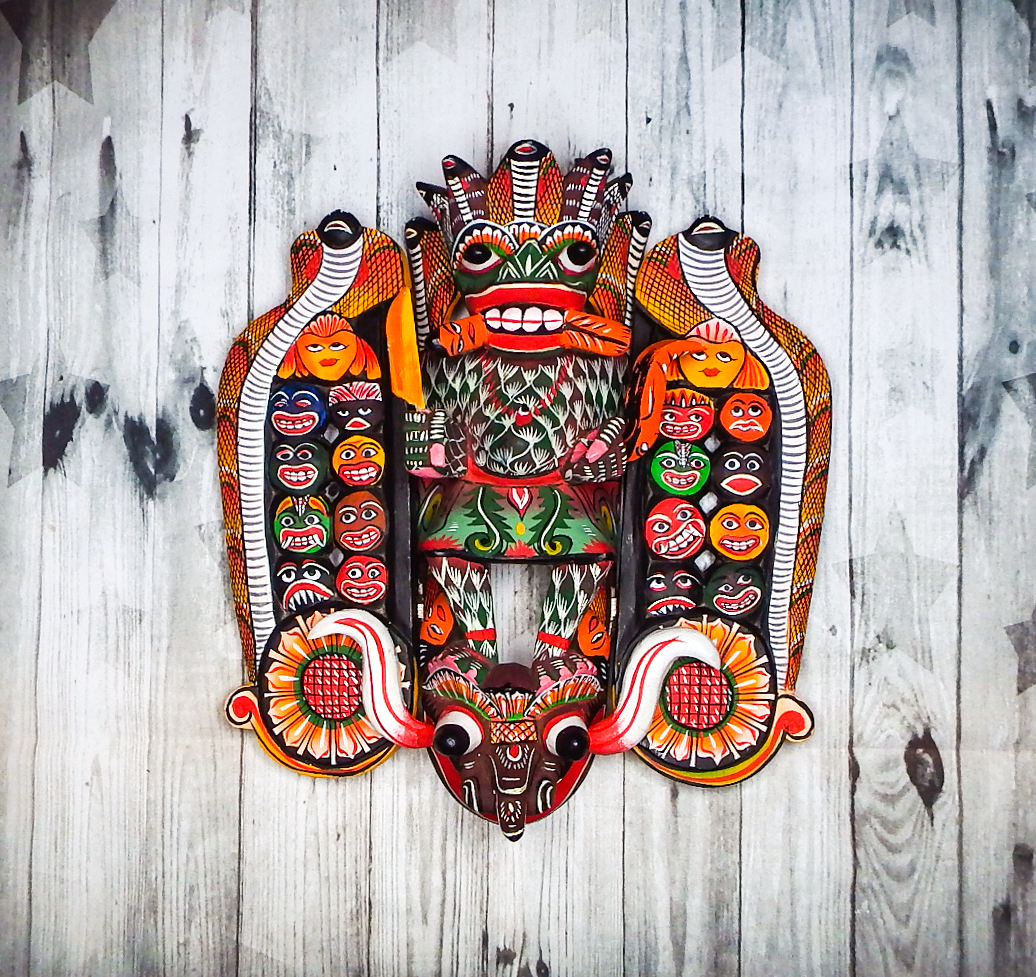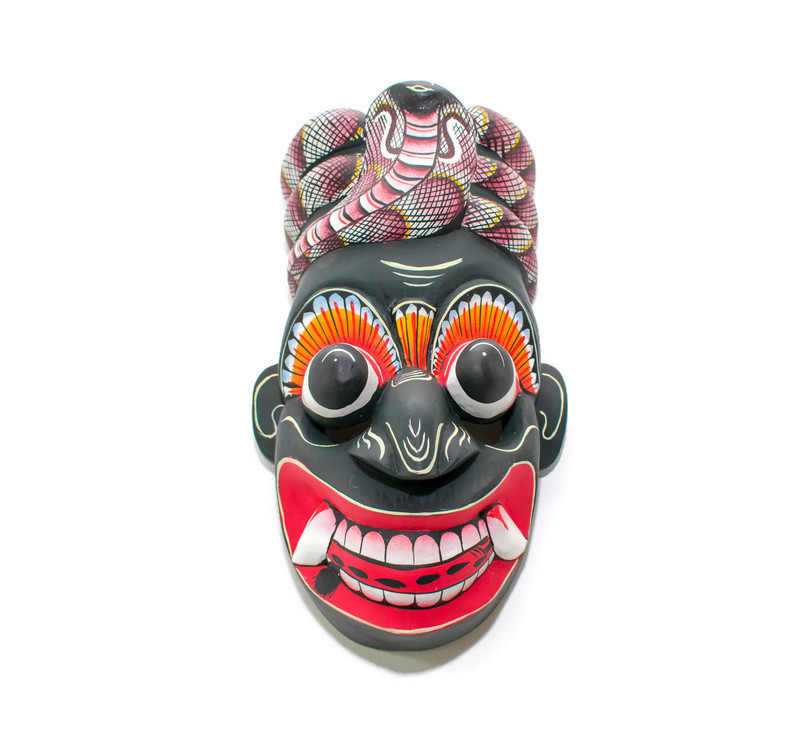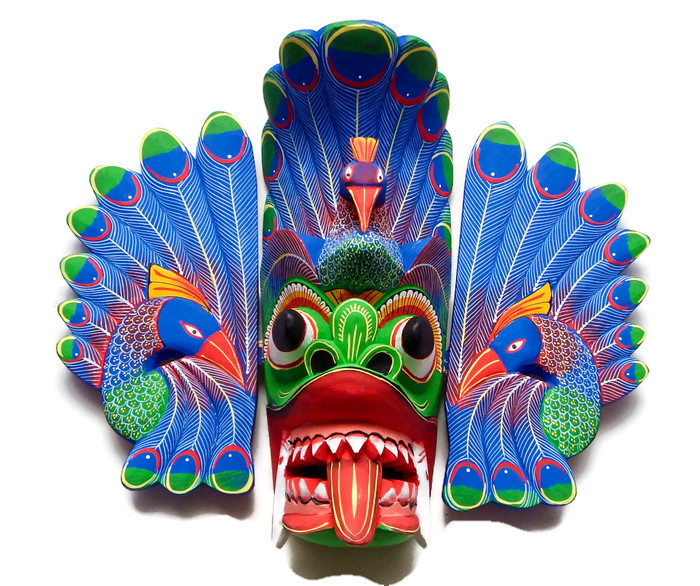- Details
- Written by Manoj
- Category: General
- Hits: 3362
Puppet Play: There is a rich tradition of storytelling native to the town of Ambalangoda. Puppetry, although quite uncommon now, was once an important part of this. A few puppeteers from this region still engage in this imaginative and expressive art form. This experience gives you a satiating glimpse into this ancient form of theatre, which they preserve carefully. A small, rural industry once existed to support the making of puppets, the production of materials used in crafting them, and the design of sets to stage puppet plays. It is largely derelict now. Puppet play is presently restricted to shows concerning moral virtue and some folklore, staged a few times each year; put on usually as part of the festivities surrounding the Buddhist holiday of Vesak or during the full moon day (Poya) each month.
The relevance of puppetry, as a distinct type of entertainment and a leisure activity for the entire family, has waned considerably. Its currency in ritualistic and cultural tradition too has withered. The entire village — from its headman to those from the perceived lower classes of society — would gather around such performances. Some of the older puppeteers speak of this era with much nostalgic affection. But a mini resurgence has occurred through the preservation efforts of these artisans and performers as well as the patronage of, both, local and foreign enthusiasts. There is renewed interest in local puppets and puppet play as a performance art. Its symbolic significance has carried it through. And we let you be a part of its revival through this distinct, alternate experience! An enthralling puppet show will be staged just for you. It can be combined with a meal or a leisurely drink or two, if sufficient prior notice is given.
Ambalangoda’s rich but partly-forgotten tradition of puppetry is to be revived and developed with the establishment of Sri Lanka’s first puppetry museum with funding support from the local bank soon.
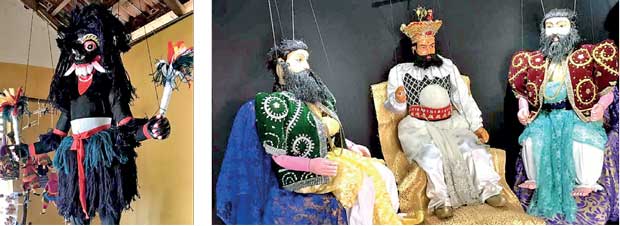
- Details
- Written by Manoj
- Category: General
- Hits: 3876
Strengths
Inherited craftsmanship
Availability of variety of raw materials
Availability of talented designers.
Availability of Creative and innovative skills
Ability to produce unique , customized products
Traditional crafts villages
Potential to create more employment opportunities especially in the rural areas.
Govt. Support agencies like Export Development Board, National Design Center, National Craft Council, Laksala.
Ready access to technical assistance and business development services.
Weaknesses
Smallness of the enterprises
Lack of proper technology
Low productivity
Disorganized Raw material supply
Competition from too many similar enterprises producing similar products.
High cost in obtaining quality certifications
Lack of strategic focus for the sector
Limited access to credit.
Low participation of younger generation.
Opportunities
Traditional and modern skilled and trained handicraftsmen in all over the island.
Global and local market available for quality and handmade crafts
Government policy intervention for upgrading handicraft products in Sri Lanka and the high commitment of the Ministry and other Allied Institutes like National Design Center, Sri Lanka Handicrafts Board, Industrial Development Board.
Prevailing trend for locally made and Eco-friendly products.
Possibility of creating a network with other related institutions like IDB, SME Bank, EDB etc. • Availability of donor funds for the development of Handicrafts.
Threats
Free import of handicraft products from SAARC countries.
Lake of awareness of National Crafts Council‘s role and achievements among government and stakeholders.
Rapid change of technologies.
Free import of substitute products in the local market.
Soaring cost of raw material and scarcity
- Details
- Written by Manoj
- Category: General
- Hits: 3772
Basically, the craft industry is distributed in the rural area. There are identified clusters in specific craft products.
| Craft made of | Sub Category | Geographical Distribution |
| Textile | Handloom Industry | Marathamune in Batticalo District |
| Thalagune in Kandy District | ||
| Beeralu Lace | Magalle in Galle District. | |
| Batik | Islandwide. | |
| Wooden | Masks | Ambalangoda in Galle District. |
| Elephant Carvings | Central & Southern Provinces | |
| Coconut shell based | Islandwide | |
| Lacquerware | Hapuvida in Kandy District. | |
| Rattan base craft Industry | Wewaldeniya in Gampaha District | |
| Rush & Reed, Hemp | Manikhinna in Kandy | |
| Pollonnaruwa District. | ||
| Batticaloa District | ||
| Clay & Ceramic | Kowulara in Monaragala District | |
| Terra-cotta pots & vases | Mawanella in Kegalle District. | |
| Paper | Re-cycled paper | |
| Elephant dung | ||
| Water Hyacinth | Islandwide. | |
| Banana Fibre | ||
| Tea refuse | ||
| Paddy husk | ||
| Metal | Brassware craft industry | Pilimathalawa in Kandy District |
| Palmyrah based products | Batticaloa, Jaffna District | |
| Aromatic, Natural | Spa | Few companies Island wide. |
- Details
- Written by Manoj
- Category: General
- Hits: 3287
Exports (Value In US$ ’000)
| Product sub category | 2011 | 2012 | 2013 | 2014 | 2015 | 2016 |
| Ceramic -Statuettes & ornaments | 4,916 | 3,717 | 3,419 | 3,170 | 2,744 | 3,742 |
| Ceramic – Pots & vases | 8 | 35 | 35 | 73 | 59 | 7 |
| Wickerwork | 980 | 1,593 | 1,375 | 946 | 1,052 | 939 |
| Candles | 241 | 297 | 291 | 1,131 | 2,897 | 1930 |
| Wooden decorations | 20 | 16 | 19 | 6 | 37 | 4 |
| Metal decorations | 309 | 212 | 225 | 172 | 226 | 237 |
| Table cutlery | 77 | 167 | 162 | 188 | 240 | 324 |
| Copper based articles | 47 | 13 | 1 | 5 | 213 | 2,226 |
| Artificial flowers | 1,903 | 1,767 | 1,770 | 1,751 | 2,235 | 1,661 |
| Musical instruments & accessories | 3 | 1 | 2 | 2 | 0.5 | 12.8 |
| Textile floor coverings, lace, tapestries | 613 | 521 | 753 | 776 | 609 | 840 |
| & special woven fabric | ||||||
| Spa products- Bath articles | 941 | 804 | 1,169 | 1,117 | 1364 | 1416 |
| Bamboo, rattan & other vegetable | 22 | 34 | 31 | 10 | 57 | 93 |
| based products | ||||||
| Toys | 35,712 | 37,990 | 40,710, | 49,551 | 49,273 | 42,508 |
- Details
- Written by Manoj
- Category: General
- Hits: 11419
Sri Lankan has a varied heritage for traditional arts and crafts, and carried forward from one generation to another in keeping with their identity and techniques.
Sri Lanka’s inherited craftsmanship, cultural diversity and rich natural resources provides the base for a wide range of giftware products that satisfy the quality conscious and discerning buyers.
Sri Lankan Crafts are combination of the traditional & modern items of beauty with utility. Semi-mechanized products are the combination of the state of the art technology from both East & the West. Final artistic touches are given by the deft fingers of the expertly skilled hand. And also the talented craftsmen make ready - to- make products according to the design given at internationally competitive prices. ultural diversity has enriched the talents of local craftsmen, with traditional skills running in the families passed down through generations.
Historical records reveal how art and crafts flourished under the royal patronage and the craftsmen were held in high esteem. The talented artisans turn out innovative products to their own designs and are ready to make products according to the designs given by buyers at internationally competitive prices. Modern trends are taken into account in producing items of beauty with utility.
A range of geo-physical zones, a climate conducive to uninterrupted plant growth, rich and precious mineral deposits provides a wide range of raw materials for the industry. The diversified raw material base for giftware in Sri Lanka is stone, coloured stones and minerals, clay, textile, wood, rush & reed, palmyra, dried leaves & seeds, recycled paper, metal etc.
The range of products includes: soft & wooden Toys, Ceramic & porcelain ornaments, wood crafts, handloom products, bags, table mats, coasters, wall hangings, lampshades, household accessories, furnishing, terra – cotta pots & vases, , paper crafts, baskets & wicker ware, artificial flowers, hand embroidery, beeralu lace products, candles, wrapping papers and packaging, wellness & spa products etc. Soft and wooden toys are subject to stringent quality checks and make certain that they have great educational value to combine learning with play. Products for exports conform to international Safety and Quality Standards such as EN 71, ASTM and CE mark and follow strict ethic benchmarks.
Objects carved in wood, made of brass, and silver, decorated with lacquer, handwoven cloth and lace, beautiful reed mats, attractive batiks, pottery, masks, are among the popular Sri Lanka handicrafts made by the traditional craftsmen of Sri Lanka (about Sri Lanka). These are available in the government and private handicraft shops in Colombo, major outstation cities, and towns in the island.
Sri Lanka’s inherited craftsmanship, cultural diversity and rich natural resources provides the base for a wide range of giftware products that satisfy the quality conscious and discerning buyers. Giftware from Sri Lanka is now a combination of the traditional skills and modern technology. Final artistic touches are given by the deft fingers of the expertly skilled hand to ensure the uniqueness and the exclusivity of the product.
Cultural diversity has enriched the talents of local craftsmen, with traditional skills running in the families passed down through generations. Historical records reveal how art and crafts flourished under the royal patronage and the craftsmen were held in high esteem. The talented artisans turn out innovative products to their own designs and are ready to make products according to the designs given by buyers at internationally competitive prices.
Modern trends are taken into account in producing items of beauty with utility. A range of geo-physical zones, a climate conducive to uninterrupted plant growth, rich and precious mineral deposits provides a wide range of raw materials for the industry. The diversified raw material base for giftware in Sri Lanka is stone, coloured stones and minerals, clay, textile, wood, rush & reed, palmyra, dried leaves & seeds, recycled paper, metal etc. Especially Elephant Dung & Water Hyacinth, banana fiber, tea refuse, paddy husk, wild grass is perfect and Eco – friendly raw materials used for manufacturing Recycled papers.
Page 11 of 13









